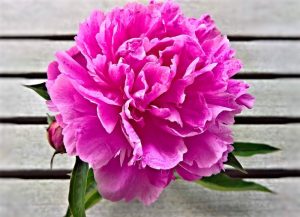In this comprehensive guide, we will dig into the concept of deadheading, its benefits, timing, and techniques, as well as some considerations that can help you make the right decision for your garden.
The Benefits of Deadheading Tulips

1. Aesthetic Appeal
One of the most immediate benefits of deadheading tulips is the enhancement of your garden’s appearance. As tulips bloom and start to fade, spent blooms can detract from the overall beauty of your garden. Removing the wilted flowers helps maintain a tidy and appealing look, allowing you to showcase the remaining healthy blooms and foliage.
2. Energy Redirection
When tulips are deadheaded, the plant can redirect its energy away from producing seeds and instead focus on strengthening its root system and foliage. This is particularly important for ongoing health and vigor, especially if you are planning for the next bloom cycle. By removing wilted flowers, you ensure that the plant conserves energy that would otherwise go towards seed production.
3. Potential for Reblooming
Although tulips generally do not rebloom in the same season, deadheading can sometimes encourage secondary flowering in hybrid varieties. If conditions are right—adequate water, nutrients, and sunlight—some tulip varieties may surprise you with additional blooms after deadheading. This isn’t guaranteed, but it’s a possibility worth considering.
4. Prevention of Self-Seeding
While tulips aren’t known for aggressive self-seeding, deadheading is a good practice to prevent unwanted seedlings from emerging in your garden. This is particularly beneficial in mixed planting areas, where you want to maintain control over which plants thrive in your space.
Timing: When Should You Deadhead Tulips?

Timing is crucial when it comes to deadheading tulips. If you’re considering whether to deadhead, it is essential to know when the right moment comes.
1. Post-Bloom Care
The ideal time to deadhead tulips is right after the flowers have fully bloomed and begin to show signs of wilting. This typically occurs about two weeks after the tulips first open. At this point, the petals may droop or begin to drop, which signifies that the flowers have experienced their prime.
2. Optimal Conditions for Removal
When deadheading, it is wise to consider the weather. On a dry, sunny day, the petals typically droop faster, indicating that it’s time for deadheading. Avoid deadheading during wet conditions, as the moisture can promote fungal diseases.
3. Recognizing When Not to Deadhead
It’s important to note that leaving the flowers on the plant for a little too long won’t harm it significantly. In certain cases, you may choose to leave the flowers intact for longer to allow for seed formation. If you’re interested in collecting seeds for growing new plants, wait until the blooms have completely dried and set seed before trimming them.
Techniques for Deadheading Tulips

Deadheading tulips can be a simple and straightforward process, but there are some techniques that can help ensure you do it effectively.
1. Tools You’ll Need
To deadhead tulips, you don’t need any specialized tools, but having a pair of clean, sharp garden scissors or pruners will make the job easier. Clean tools minimize the risk of transferring any diseases to your plants.
2. The Deadheading Process
Identify Spent Blooms: Look for flowers that are wilting or have already dropped their petals. These are the candidates for deadheading.
Cut the Stem: Using your sharp scissors, cut the stem just above the first set of healthy leaves. This is typically a few inches down from the flower. Make a clean cut to prevent damage to the plant.
Clean Up: Collect the removed blooms and dispose of them, especially if they show signs of disease. Leaving them on the ground can attract pests or encourage disease.
3. Consider Leaving Some Foliage
While deadheading is important, it’s equally important not to remove too much of the foliage. The leaves play a critical role in photosynthesis, allowing the plant to gather energy for the next growing season. Leaving the foliage intact will aid the establishment of stronger roots and help ensure a robust blooming cycle next spring.
Post-Deadheading Care for Tulips

Once you’ve successfully deadheaded your tulips, taking additional care of them can help maximize their health and longevity.
1. Watering
Tulips thrive best in well-draining soil, but they still need regular watering to maintain moisture levels. After deadheading, continue to water the plants to keep the soil consistently moist. Avoid overly soggy conditions, which can lead to bulb rot.
2. Fertilization
Consider applying a balanced fertilizer as the tulips transition from blooming to dormancy. A formula that is higher in phosphorus can support the root development and bulb nourishment that tulips require for future growth. Follow the recommended dosage to avoid potential over-fertilization.
3. Mulching and Ground Cover
Adding a layer of mulch around the base of your tulip plants after deadheading can help maintain soil moisture and suppress weeds. A natural mulch can also improve the soil’s quality as it breaks down over time.
4. Preparing for Next Season
If your tulips are treated as perennials, you’ll need to plan for the dormant season, which typically begins after the foliage dies back. In late spring or early summer, once the leaves start to yellow, you can stop watering. Allow the foliage to die back naturally; this process allows the plant to store energy in the bulb for next year’s blooms.
The Argument Against Deadheading Tulips

While deadheading has its benefits, some gardeners might choose not to do so. Here are a few reasons why you might opt against deadheading:
1. Natural Garden Aesthetics
Some gardeners prefer a more natural look in their gardens, allowing the flowers to dry and set seeds. This can create a more relaxed and untamed aesthetic, attractive to elements of wildlife.
2. Seed Collection
If you’re interested in growing new tulips from seeds, leaving the flowers to form seeds can be beneficial. Collecting seeds allows you to propagate tulips, although growing from seeds requires patience and care as it may take several years for flowers to bloom.
3. Reduced Workload
In a busy gardening schedule, some may find the labor of deadheading to be an unnecessary task. If those petals don’t bother you, skipping on deadheading might be the right choice for your gardening routine.
Final Thoughts: Should You Deadhead Tulips?
Ultimately, the decision of whether to deadhead your tulips depends on your gardening philosophy, aesthetic preferences, and future gardening plans. If you value a tidy garden space and want to maximize the health and vigor of your tulips, deadheading is a worthwhile practice. However, if you prefer a more natural look or wish to collect seeds, you may choose to leave the blooms be.





